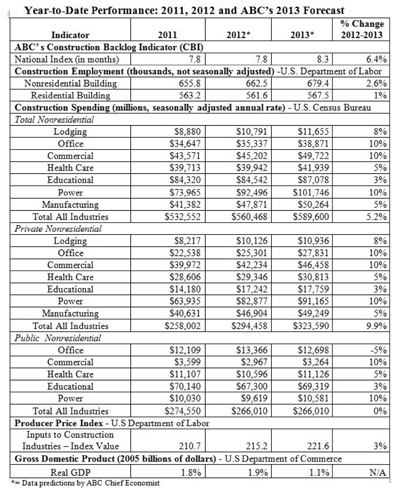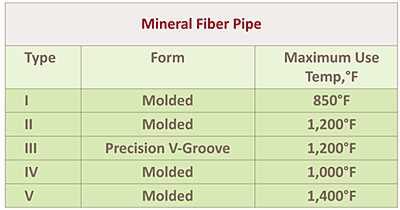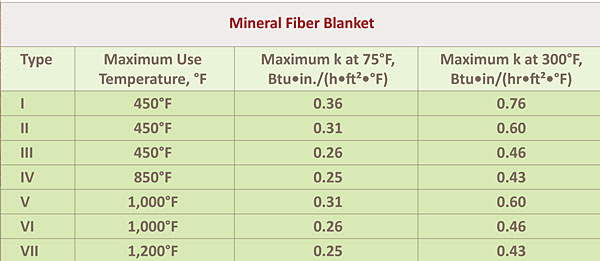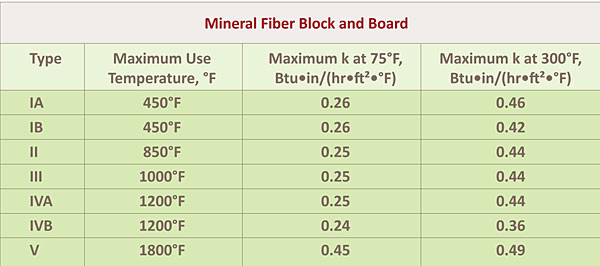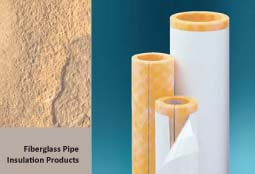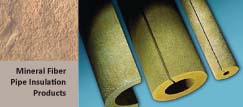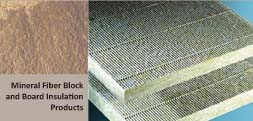As
demand increases for high-performance buildings, new methods and standards for
regulation are required.
Society demands a lot of buildings, and buildings require a
lot to meet those demands. Society expects buildings to provide a safe, secure,
healthy, and productive environment. To provide those features and peace of
mind, buildings use approximately 40 percent of the nation’s primary energy, 70
percent of the electricity generated in the United States, and around 10
percent of the nation’s water.1
The increasing desire for safer, more secure, healthier
buildings in the face of growing energy, environmental, and economic challenges
heightens demand for high-performance buildings.
As recognized by Congress, a high-performance building means
a building that “integrates and optimizes on a life cycle basis all major high
performance attributes, including energy conservation, environment, safety,
security, durability, accessibility, cost-benefit, productivity,
sustainability, functionality, and operational considerations.”2 To
individually and collectively consider, integrate, and optimize these diverse
attributes requires significant changes across the building industry.3
As a consequence, the building industry is evolving. Information technology has
played a role in streamlining historical processes.
Concepts such as integrated design, building information
modeling, building energy modeling, and alternative
methods of building construction project delivery (e.g., design-build,
construction manager/general contractor, performance contracting) are some of
the innovations that have emerged to actually change those processes. Public
demand for accountability and transparency also has grown.
However, the processes for communities and governments to
make sure buildings achieve the desired characteristics, whether high
performance or not, have remained largely unchanged, with the notable exception
of streamlining those processes through the use of information technology.
Adoption and
Enforcement of Building Regulations
Building
construction regulations (e.g., codes and standards governing the design,
construction, and even operation of buildings) have long served as the main
tool of governments in setting agreed-upon norms in a jurisdiction. Compliance
with those norms is generally secured through their enforcement by governments
or their designated agents in the design and construction of buildings. The
concept of building codes goes as far back as Hammurabi (circa 1772 B.C.), who
established a performance-based code4 with strict penalties for
noncompliance.5 Codes were developed and adopted in Europe as it was
settled, and evolved over many decades. Those codes were imported to the new
world and formed the basis for city codes as the United States was formed and
grew. Significant fires in Chicago and Baltimore,
and a San Francisco earthquake, in the late 19th and early 20th centuries
spurred further development of codes for the design and construction of
buildings. These efforts were fostered by the insurance industry. The primary
focus at that time was to avoid loss of life and property. Codes have increased
in stringency since then to address a myriad of new technologies and design concepts,
and they have expanded beyond health and safety requirements to include other
societal values such as accessibility, energy efficiency, indoor air quality,
and sustainability.
Codes typically contain two types of requirements:
prescriptive and performance. Prescriptive requirements provide minimum
standards for building materials, products, systems, etc. They stipulate
specifically what to provide and often represent a checklist of items and the
minimum acceptable specifications for those items. In contrast,
performance-based requirements set a desired end state and do not provide
minimum characteristics, per se?they set the desired result without specifying
how to achieve that result. In most instances, a measure of achieving the
desired result is based on the anticipated results associated with following
the prescriptive requirements. Both types of requirements are generally applied
when designing and constructing buildings with the premise that, if followed,
the building will perform at an acceptable level.
A third type of requirement is gaining traction:
outcome-based requirements. In this case, the performance outcome is
established. It is not aligned with any particular prescriptive provisions, and
compliance is verified after rather than before occupancy. Discussion of this
approach and its relationship to compliance verification methods appears later
in this article.
Today, several private-sector organizations develop model
codes and standards that are used as a basis for building construction regulations.
These documents provide the necessary criteria to make sure buildings are
designed and constructed to be considered safe, secure, healthy, energy
efficient, accessible, etc. They are then available for adoption by federal,
state, and local government as laws or regulations, or by anyone through
contracting or other mechanisms that can secure their application and use.
While the development process is slightly different within each organization,
the process is intended to comply with several key criteria:
- The development process includes
a balance of all relevant stakeholders including government, citizens, public
interests, and building industry representatives – without undue influence from
any one particular stakeholder;
- A rigorous process is followed
to make sure that recommendations for revision to existing codes and standards,
or criteria for new model codes and standards, receive proper consideration and
resolution; and
- The process is transparent to
facilitate trust and diverse engagement.
Like the development process within the private sector, the
adoption process by governments varies significantly. Some jurisdictions
require legislative action to adopt or update a code, while others
automatically update to a new edition of a model code or standard upon its
publication. In some instances, consideration by a state or locally appointed
committee or council may be required.
Within these processes, a jurisdiction may elect to develop
its own code to address state and/or local needs, adopt a model code unamended,
or adopt a model code that contains amendments the jurisdiction develops (the
predominant method of adoption). Once adopted, the adopting entity typically
sets the effective date of the new code to allow time for implementation and
educational considerations. Once the process is complete, the building industry
must satisfy the code’s provisions in the design and construction, and
sometimes actual operation, of a building. Those provisions are generally based
on nationally developed model codes and standards, generally adopted at the
state or local level (with the exception of buildings owned by or leased to
federal agencies), and compliance is enforced.
The responsibility to administer
building codes typically falls upon state or local jurisdictions. The
responsibility to comply with the adopted codes and standards falls on the
building owner or the designated agent. Compliance in the design stage
generally falls on designers and specifiers, and compliance with respect to actual
construction will involve builders and contractors. Enforcement strategies
vary according to a state or local government’s regulatory authority,
resources, and staffing. Programs to verify compliance through code enforcement
may include all or some of the following activities:
- Review of plans
- Review of products, materials, and equipment
specifications
- Review of tests,
certification reports, and product listings
- Review of supporting calculations
- Inspection of the building and its systems during
construction (either by a public employee or a
recognized third party)
- Evaluation of materials substituted in the field
- Inspection immediately prior to occupancy
- Issuance of permit, certificate of occupancy,
and/or other administrative documents
- Processing of variance/appeal requests to the
applicable code
For most requirements contained in codes, a building
department’s ability to re-inspect and verify compliance ends once a building
is issued a certificate of occupancy, as illustrated in Figure 1. Exceptions
can include elevators, boilers, fire suppression systems, egress, kitchen
sanitation, and plumbing system functionality. In addition to applying to new
construction, the adopted codes generally apply to additions, renovations,
repairs, and alterations to existing structures. Depending on the code and the
nature of the work being performed, the existing building’s status also will
have to be addressed and code compliance verified.
With respect to energy efficiency, Figure 1 can be summarized
as follows:
- National model codes and
standards are developed and updated, and provide prescriptive criteria to
govern the design, construction, and pre-occupancy commissioning of buildings.
They also provide a compliance path based on documenting equivalent or better
energy performance compared to expected performance if the building just
satisfied the prescriptive criteria.
- Those model codes and standards
are adopted by federal, state, and local government to govern the design and
construction of buildings.
- Designers and specifiers, or
others retained by building developers/owners, prepare plans and specifications
for the building, and document their compliance with what is adopted.
- Where compliance verification is
performed, the adopting agency or its agents conduct(s) a review of the plans
and specifications. When it is determined that they meet the adopted code, a
building permit is issued.6
- The adopting agency or its
agents conduct(s) inspection of the building during construction to verify that
it is in conformance with the approved plans and specifications. If so,
subsequent phases of construction are allowed to proceed. If not, a stop-work
order could be issued and remain in effect until the noncomplying construction
is repaired or replaced.
- Upon passage of a final
inspection, an occupancy permit is issued by the adopting agency or the
designated enforcement agency.
- The building is occupied and the
occupants, owners, facility managers, etc. are provided a building that meets
the minimum energy code?that is, it can be operated to provide certain
environments and services, and there is an expectation that the energy use and
associated costs of operation will be consistent with what was intended by the
code.
The New Paradigm
and the Old Methodology
Until
recently, building owners and policy makers rarely asked how a building that
meets the energy code at occupancy really performs, and what that means with
respect to a code that does not apply after occupancy. In the end, if owners or
policy makers desire a particular level of performance, why not provide that
expectation up front and focus on whether the building actually performs to
expectations after it is occupied?
Recently, considerable focus has been directed at green or
sustainable buildings and achieving net-zero energy use. Achieving the results
envisioned by green building programs and reducing building energy use relies
on significantly more information and oversight than existing
prescriptive-based codes and standards, with compliance verified prior to
actual building occupancy. Unlike criteria covered by traditional health and
life-safety codes, resource use and many of the criteria covered in energy and
green or sustainable codes are measurable on an ongoing basis; their performance
is evident daily, and their ongoing level of performance is significantly
affected by operations and maintenance practices. Thus, they represent ongoing
costs to building owners, and are subject to measurement and verification.
Despite the differences between life-safety issues and energy
and water use, the development of codes and verification of compliance with
codes in these areas are largely the same. Current energy, water, and plumbing
codes do not actually regulate the use of energy or water, but cover the design
and construction of the building. Based on meeting prescriptive or performance
criteria for products, materials, equipment, or systems in buildings, there is
some expectation that the building will actually perform at an “energy efficient”
level. Prescriptive criteria include such items as minimum reflectivity of
roofing, minimum insulation levels, or providing certain types of lighting
controls.
Within the codes, individual performance criteria can be
found, such as lavatory faucets can use no more than X gallons per minute, or a
forced air furnace must have a minimum annual fuel utilization efficiency of Y.
Additionally, some design choices with significant impacts on actual building
energy use have traditionally not been addressed by energy codes but are
starting to be considered (e.g., minimum energy standards recently have added
orientation requirements, and green codes have addressed plug loads). These
include all energy-using objects brought into the building upon occupancy (plug
loads), orientation, and architectural massing.
Given today’s economic stresses, both the public and private
sectors are forced to prioritize limited resources. Because they do not
directly impact health and life safety, energy and green or sustainability codes
often receive a lower priority in the process of compliance verification.
Clearly, given a choice between working fire-suppression sprinklers in a
hospital or a working auto-dimming switch on a lighting system, the former
would take precedence. This example provides a look into the core focus of this
article. Given current and likely future resource challenges, and the need to
apply resources to top priorities, is there a way to compose energy and green
or sustainable codes so that compliance verification can be significantly
simplified while increasing compliance and delivered outcomes?
Going beyond ensuring a design meets a set of criteria on
paper, high-performance buildings must be constructed pursuant to the plans and
specifications, and then commissioned and operated as real buildings. Achieving
high performance requires a focus on actual performance throughout a building’s
life cycle?from design and construction to operations and maintenance to
deconstruction. Existing energy and green or sustainable codes are not
presented in a manner that actually addresses the long-term performance of
buildings, nor is the current enforcement process geared to look beyond
occupancy at energy or water use issues.
Outcome-based policies7 are emerging to shift
focus from verifying compliance in design and construction and declaring
success toward the actual performance of the building following issuance of an
occupancy permit. These policies are intended to go beyond the
performance-based codes that are based on prescriptive codes and do not require
a measurement and verification process after occupancy.
Such policies would provide valuable feedback to building
teams and result in progressive improvements in building design and
construction. In effect, instead of trying to prescribe how to design and
construct buildings, why not just state a simple, measurable goal? Such an
approach recognizes the myriad factors that affect performance of the building.
These are analogous to prescribing in detail all the things a runner must do,
wear, eat, drink, etc., before a race; running down a checklist at the start of
the race and then sending the runner home, versus simply putting up a finish
line and measuring how fast the runner actually runs the course.
The implementation of outcome-based policies with respect to
building energy and/or water use is elegantly simple, but it will require
rethinking existing norms around design fees, code enforcement, liability,
contract duration, and establishing new norms of what happens if the building
does not perform to achieve the desired outcomes.8
Trying to fit new approaches into an existing infrastructure
not designed to accommodate them can result in ineffective and frustrating
attempts to verify and achieve compliance. It also ignores potential leverage
points and areas of expertise that can be utilized in pursuit of established
goals. Important tools to support long-term performance, such as operations and
maintenance plans and commissioning, are designed to occur after the certificate
of occupancy.
However, the existing code enforcement scheme is generally
not set up to handle long-term monitoring requirements associated with energy
and/or water use. A new, holistic scheme designed to achieve specific energy-
and/or water-use results for the life cycle of a building is necessary.
Start at the End
If
the ultimate intent is to achieve net-zero energy- and water-use buildings,
then codes and standards must be reformulated to focus on outcomes. The
building design and regulatory systems must be reformatted to provide the most
efficient process for reaching and verifying satisfaction of such goals.9
This is particularly important as code enforcement agencies and building owners
deal with a new economic environment where funds, personnel, and other
resources are limited. A singular focus on streamlining and/or applying more
resources to support the existing code enforcement infrastructure may seem
appropriate given the format and application time frame of current codes.
Alternatively, one may want to start at the end goal and explore how that might
be achieved in a process that reduces the stresses on the current support
infrastructure.
Throughout the life cycle of a building, there are numerous
touch points with government and other influences that can impact how buildings
ultimately perform. In addition to code officials, these include insurance
companies, financiers, utilities, tax agencies, tenants, and purchasers. Such
touch points should be examined as potential opportunities to influence
building performance. While the building community is recognizing the need for
integrative design processes, an integrated compliance verification process
appears equally attractive.
Achieving net-zero energy or water use
(and any improvement in performance toward that end) requires a well-designed
and well-constructed building, and well-managed operations and maintenance. The
existing code compliance verification scheme has the capability to adequately
examine the design and construction phase of a structure in a prescriptive code
environment to determine compliance.
As buildings become increasingly complex?and as building
modeling improves and owners and regulators demand specific levels of
performance?the adequacy of the existing compliance verification scheme comes
into question. Outcome-based policies can alleviate the need to bolster current
compliance verification processes simply by changing what is measured when.
Once a minimum threshold is demonstrated, further details of
the design of the structure are irrelevant. It is the actual energy or water
use that matters. Outcome-based policies would set the desired end state while
addressing stress associated with continuing to operate the current support
infrastructure.
Going back to the running analogy, an examiner with a
checklist at the start of the Boston marathon is replaced with timing chips, a
starting gun, and a finish line, with the recognition that there may be certain
minimum requirements that must be satisfied in order to run and that during the
race there may be certain checks such as ensuring the course is not cut.
Reaching the End
Goal
Through
a results-focused approach to achievement of building energy- and water-use
goals, a vast transformation of the building community is possible. An incentive-
and market-based approach would account for actual energy use?what building
owners actually pay for and policy makers actually want to reduce. By extending
responsibility of the design and construction team beyond the certificate of
occupancy, and involving them with the building owner and operator during
occupancy, valuable long-term feedback loops are established. The absence of
many of the constraints present in existing energy and water codes would
inspire technological and design innovation.
Code enforcement officials would remain
the primary mechanism to support life safety, but more recent requirements (and
related challenges) associated with enforcement of energy and green codes
largely would shift to the entities and policies that have the greatest ability
to influence energy use.
The Price of
Inaction
The
building community has established performance goals for the buildings they
design, construct, operate, and maintain. However, there appears to be growing
consensus that incremental improvements in existing codes will result in only
marginal improvements based primarily on assumptions rather than actual,
as-occupied performance.
Without a comprehensive policy focused on achieving an
identified result, piecemeal policies will continue to develop with an
uncoordinated result. Eventually, compliance rates may drop, as codes become
more stringent with respect to energy and/or water use, and state and local
resources become more stretched.
A new approach to achieving building
energy- and water-use goals is necessary. Such a new approach should be
centered on the recognition that results are based on the design and
construction of buildings, and how they are commissioned, operated, and
maintained. The current compliance verification scheme based solely on
compliance verification through code department enforcement up to initial
occupancy is inadequate, and even if significantly enhanced would still only
assess design and construction, and not actual operational outcomes. It is
those actual outcomes (rather than those anticipated by the design) that matter
to building owners, policy makers, and the public. More importantly, it is
those outcomes that will address our energy, environmental, and economic
challenges.
The shift in approach to compliance verification cannot
happen without the demand and insight of a progressive building community
willing to stand behind the buildings they design, construct, own, operate, and
maintain; and willing to support codes and standards that focus on measuring
and reporting the actual performance of buildings.
Notes:
1 Department of Energy, Buildings
Energy Data Book, Table 1.1.3 and Table 8.1.1, buildingsdatabook.eren.doe.gov/
2 Energy Independence and Security
Act of 2007 §401 (PL 110-140)
3 For the purpose of this article,
the building industry is considered in a very broad sense to include everyone
involved in the design, construction, commissioning, operations, and financing
of buildings, and those involved in a similar manner with the variety of
products, materials, systems, devices, etc. that buildings comprise.
4In general, a performance-based
code establishes a desired result without indicating how that result is to be
achieved. Conversely, a prescriptive code provides specifics to individually
govern all items in a building that would affect the outcome.
5 According to Hammurabi’s code,
if a builder builds a house for someone and does not construct it properly, and
the house falls and kills its owner, then that builder shall be put to death.
If it kills the son of the owner, the son of the builder shall be put to death.
If it kills a slave of the owner, then the builder shall pay, slave for slave,
to the owner of the house. If it ruins goods, he shall make compensation for
all that has been ruined; and, inasmuch as he did not construct properly the
house that he built and it fell, he shall re-erect the house from his own
means. If a builder builds a house for someone, even though he has not yet
completed it, if the walls seem toppling, the builder must make the walls solid
from his own means.
6 It is possible that the permit
would only cover certain aspects of construction and be updated during
different phases of construction.
7 Prior discussion has focused on
development of “outcome-based codes,” but, as will be discussed later, this
limited approach is inefficient and unlikely to reach the levels of actual
performance desired.
8 For an examination of the
existing norms and challenges associated with a shift to outcome-based
requirements, see Colker, R.M., “Outcome-Based Codes: Answering the Preliminary
Questions,” Strategic Planning for Energy and the Environment, Spring 2012.
9 The authors acknowledge that not
all buildings can achieve net-zero energy or water use in the near future. However,
all building owners and policies should reach for the lowest total energy use
possible for a particular building. Development of net-positive energy and
water buildings, and community approaches to net-zero energy and water use,
will help even out some of these variations across buildings. The key
distinction is measuring actual performance against some metric, or designing
and constructing to a set of limited prescriptions but not addressing actual
performance.


